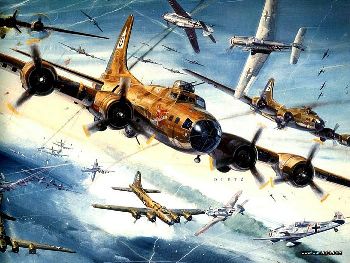The FAA has historically found an overwhelming public interest in preserving United States aviation history, including former military aircraft transferred to private individuals or organizations for the purpose of restoring and flying these aircraft. The FAA has further determined that, with appropriate conditions and limitations imposed for public safety purposes, access to these aircraft can include allowing the public to experience flight. Because the regulations (14 CFR) do not otherwise allow such operations, the FAA established through its mid-1990s Living History Flight Experience (LHFE) policy that exemptions are an appropriate way to preserve aviation history and keep historic airplanes operational when comparable airplanes manufactured under a standard airworthiness certificate do not exist. The LHFE policy provided a way for the private owner/operators of historically significant, American-manufactured large, crew-served, piston-powered, multi-engine, World War II bomber aircraft to conduct limited passenger carrying flights, for compensation, as a way to generate funds needed to maintain and preserve these historically significant aircraft for future generations.

However, even after defining the guidelines for approving LHFE exemptions, the number of petitions for exemptions outside this scope-e.g., for former military turbojet-powered aircraft such as the L-29, L-39, TS-11, Alfa Jet, and others that remain in active military service-led the FAA to issue further guidance in 2006 on Exemptions for Passenger-Carrying Operations Conducted for Compensation and Hire in Other Than Standard Category Aircraft (71 FR 15087). However, the FAA also noted that in expanding requests beyond the original intent, i.e., going from a passenger in a B-17 to manipulating the controls of a fighter jet to conducting simulated aerial combat fights in the interest of "the historical experience," requires the agency to reevaluate its policy. The FAA noted that the clear market orientation of these requests undermines arguments of a public interest goal in preserving unique historical aircraft.

Nevertheless, the 2006 policy agreed to consider any request for exemption for passenger-carrying flights in non-standard category aircraft, especially former military turbine-engine-powered aircraft, on a case-by-case basis, including consideration of non-American manufactured aircraft. However, some petitioners are now creating business models (as indicated above) that, if authorized by the FAA, would offer civilians an opportunity to conduct such aerial combat flights with hands-on flight experience in these aircraft. The FAA did not contemplate or intend operations of this nature when it originally developed the LHFE policy and, since issuance of the original policy and its subsequent revisions, additional issues (e.g., airworthiness and maintenance concerns) continue to emerge. Because of the high risks associated with the industry's expanded business model, the FAA has determined that a comprehensive evaluation of this policy is necessary and seeks public input.
Commenters who wish to present oral statements at the June 26, 27, and 28, 2012, public meetings should submit requests to the FAA no later than June 18, 2012. The FAA is announcing public meetings to gather additional technical input on the subject of exemptions relating to the LHFE. Input gathered will aid in developing future FAA guidance for evaluating LHFE petitions for exemption. Prior to the public meetings, the FAA is seeking public comment on the guidance. - FMI: Federal Register